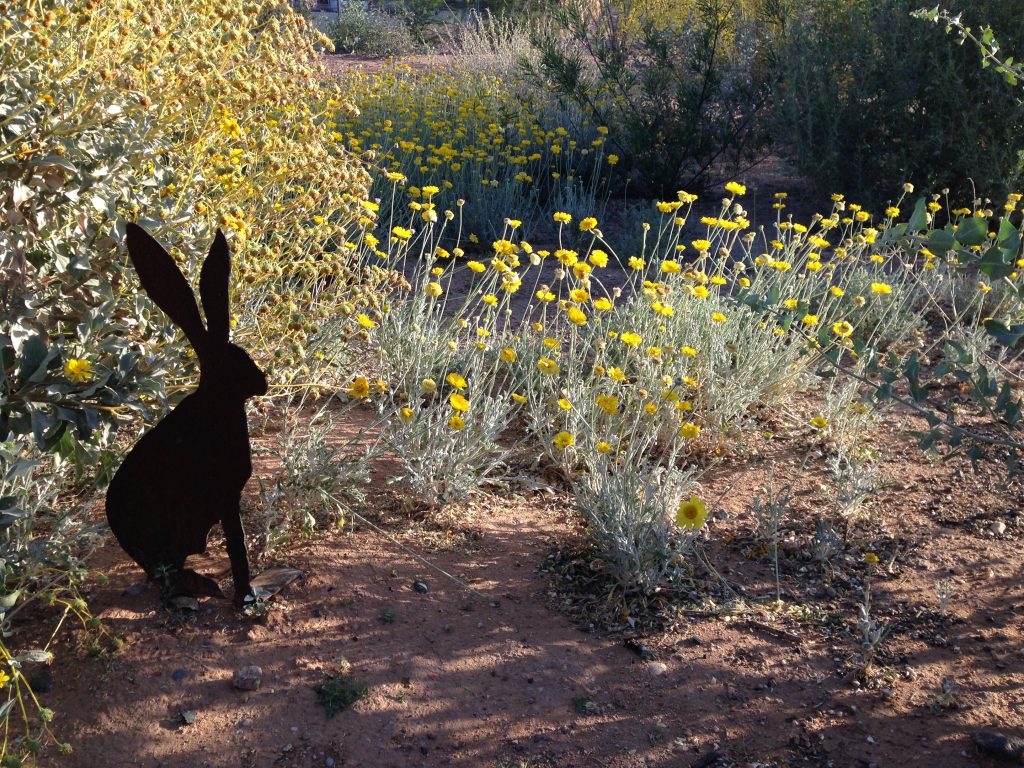Garden of the Bs: Arizona’s oldest high school, Mesa High, once offered a thriving agricultural education program to its students that included use of a field on campus for growing crops and grazing animals. But since the retirement of the program’s last teacher over 25 years ago, that one acre lot has been ignored, grew weeds, collected wind-blown trash, suffered from occasional vandalism, and lost any appearance of its Ag Ed roots.
Two science teachers, though, envisioned alternative uses for the field of weeds. The first plan, one that had received grants and involved a groundbreaking ceremony attended by then Secretary of the Interior Manuel Lujan, would have created a riparian ecosystem complete with a pond and endangered native fish. But a soil analysis revealed nitrogen concentration too high for sustainable management; this project was canceled shortly after groundbreaking.
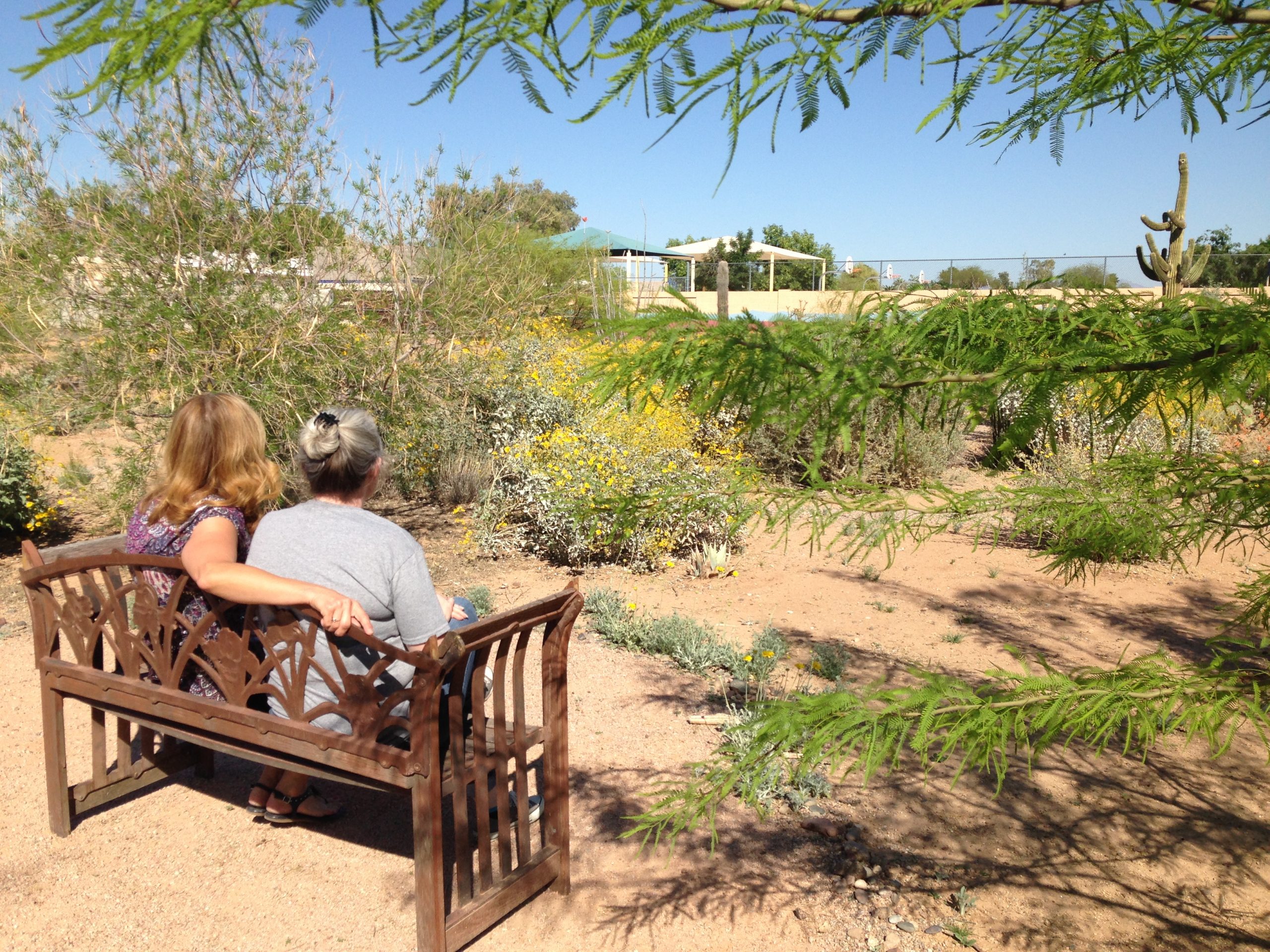
A Series of Fortunate Events
But the second plan, facilitated by a series of fortunate events, developed into a native Sonoran desert garden designed to be an outdoor classroom and to attract bees, birds, butterflies, beetles, bugs, bats, and bunnies. The winner of the name-the-garden competition among students was “Garden of the B’s.” Now two and a half years old, the Garden hosts nearly 90 species of native plants, has attracted 35 different kinds of birds and countless insects, and has been recognized or awarded multiple times, including an “Award of Merit” from Arizona Forward’s Environmental Excellence Awards in September 2017.
John Jung, Mesa High’s Environmental Science teacher, directed the Garden’s development starting in the winter of 2014 by gaining permission from the district’s superintendancy, practicing designs with students, networking with master gardeners, and applying for grants. The big break came when he met Cliff Douglas, owner of Arid Zones Tree nursery, who donated 29 trees and introduced Jung to a landscape architect. The architect, Steve Martino, turned out to be internationally known and awarded, and he performed his work on Mesa High’s garden pro bono.
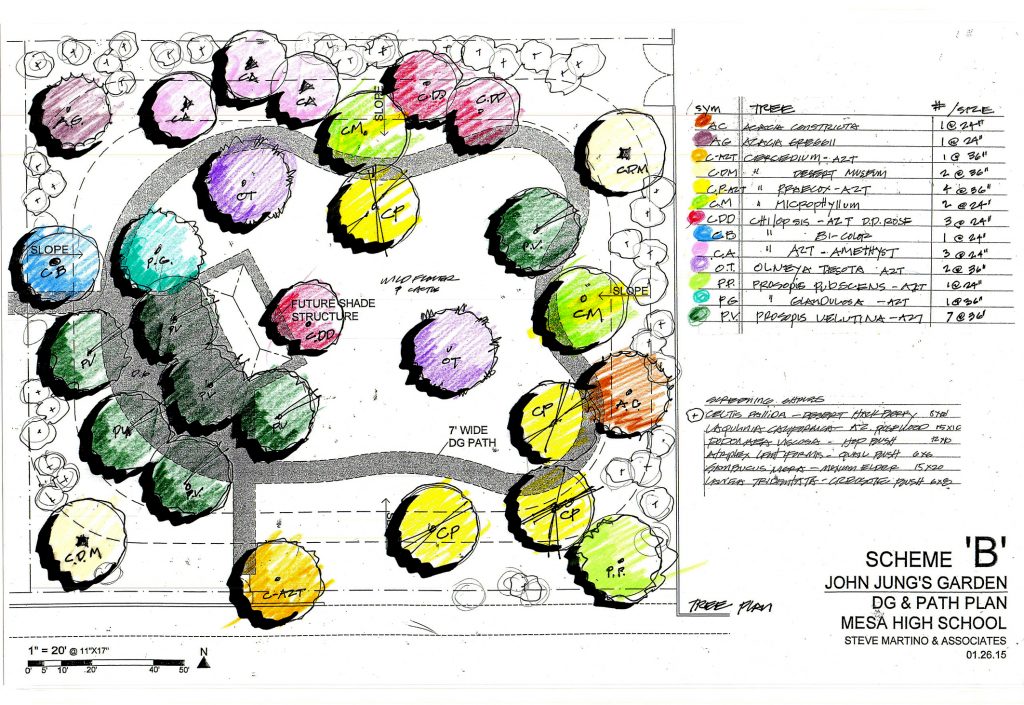
This was followed by a series of grants from Donors Choose, Lowe’s, the Arizona Diamondbacks, Project Learning Tree, SRP, Tucson Cactus and Succulent Society, Maricopa Audubon Society, Ewing Irrigation, and Seeds for Education. The total value of donations and grants is north of $30,000.
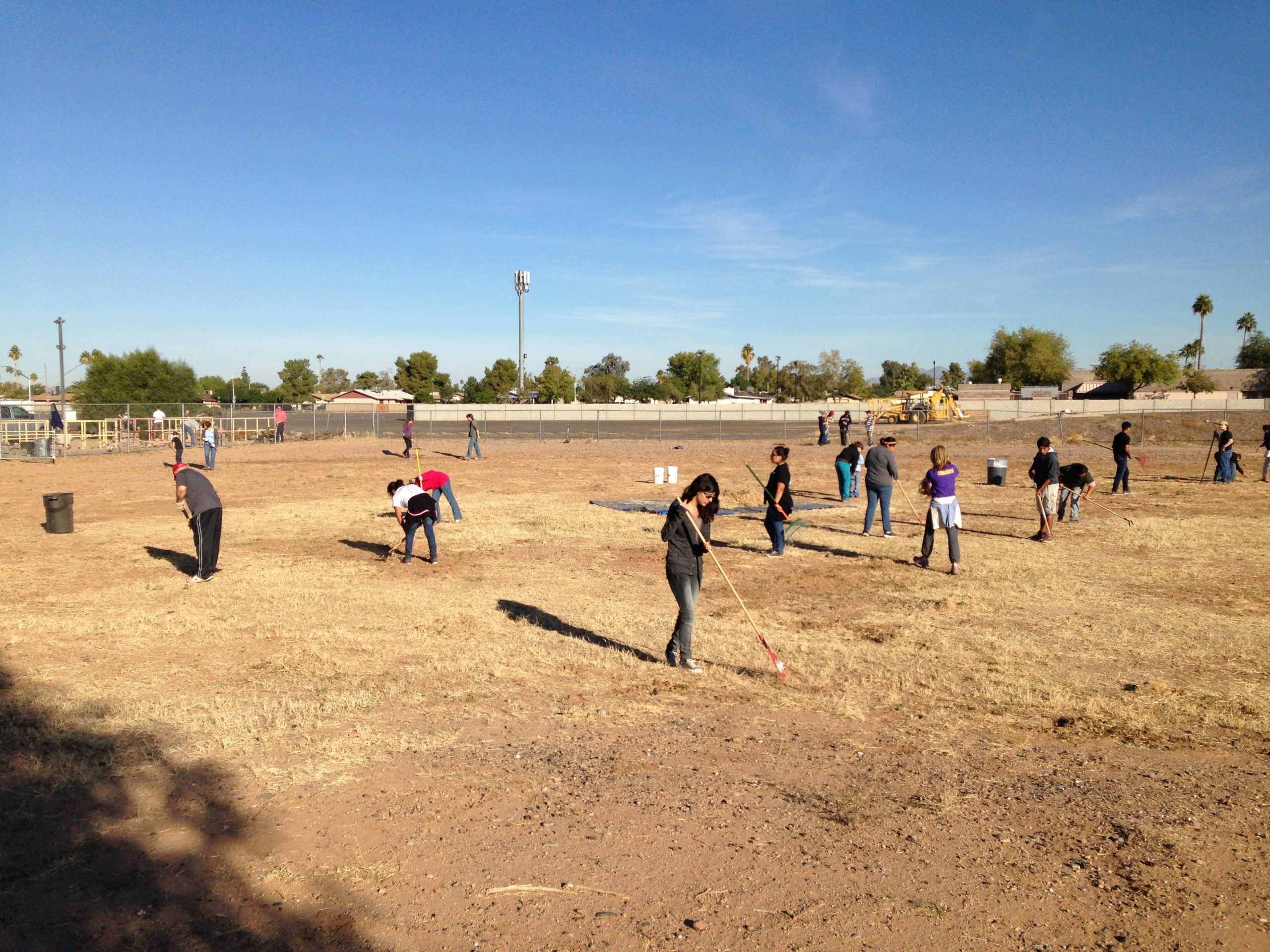
Volunteers Make All the Difference
The decomposed granite path, drip irrigation system, and a new south entrance were installed in April 2015 along with the planting of the initial 29 donated native trees. About 40 student-grown shrubs were added the next month.
November of 2015 showed a flurry of additions, beginning with community volunteers planting 100 shrubs and 80 small cacti, followed by the professionals planting 7 large saguaros and 16 Ocotillo. For each of the next two Novembers, 30 to 40 more shrubs were planted in the ever-decreasing open space. A Mesa High parent and Tree Doctor owner named Jeremy Spilsbury dug near 300 holes during this time span, a task for which he received the MPS “Volunteer of the Month.”
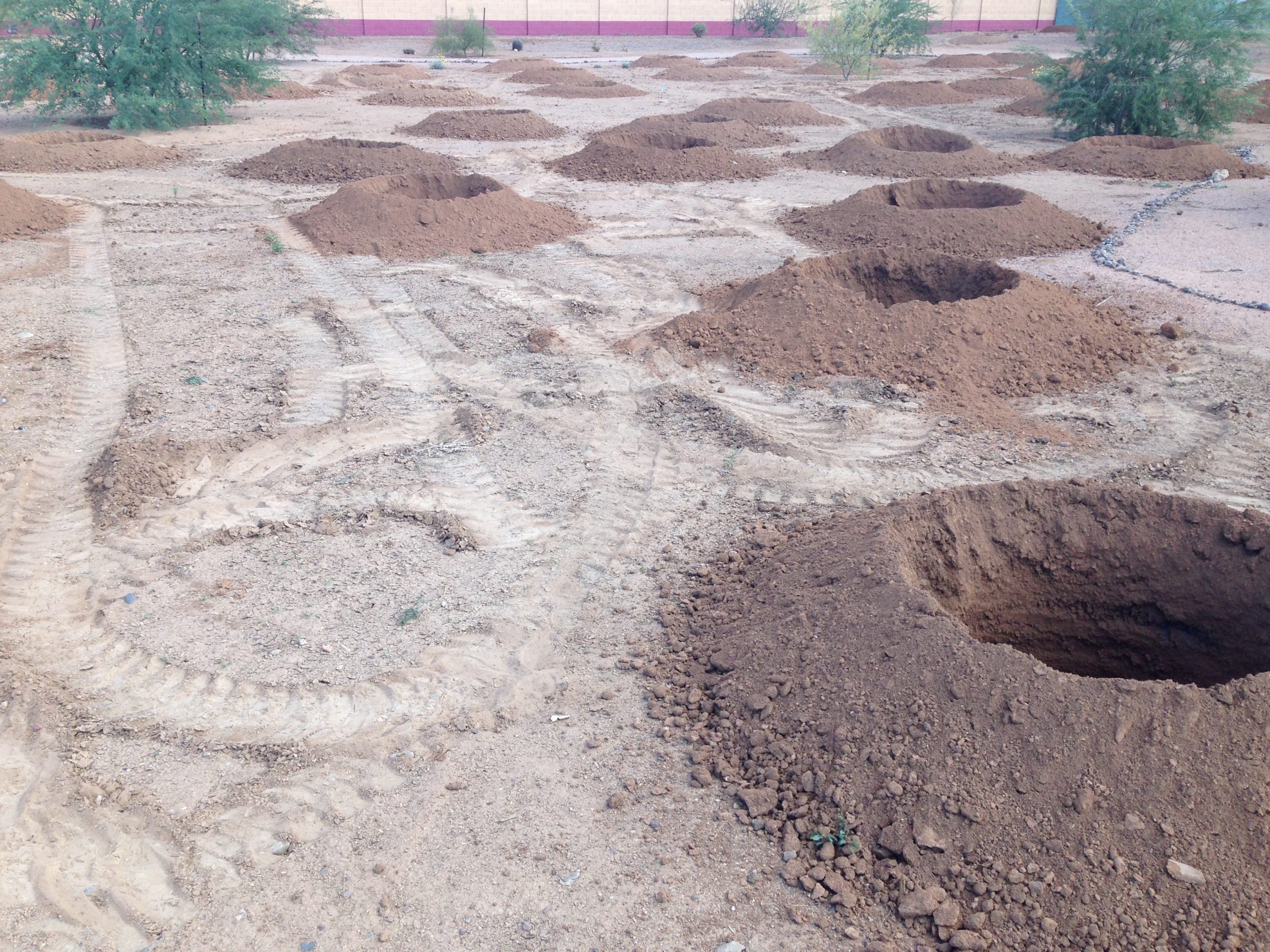
The Garden’s Mission
The mission of the Garden is “to create a natural Sonoran desert ecosystem and outdoor classroom where students, faculty, and the Mesa High School community can learn about indigenous flora and fauna, local geologic characteristics, and our relationship with the sun.” To that end, plant species had to be from the Sonoran desert and attractors of pollinators. Although the Garden supports a few non-native but complementary species, close to 98 percent of the total plant population are indigenous.
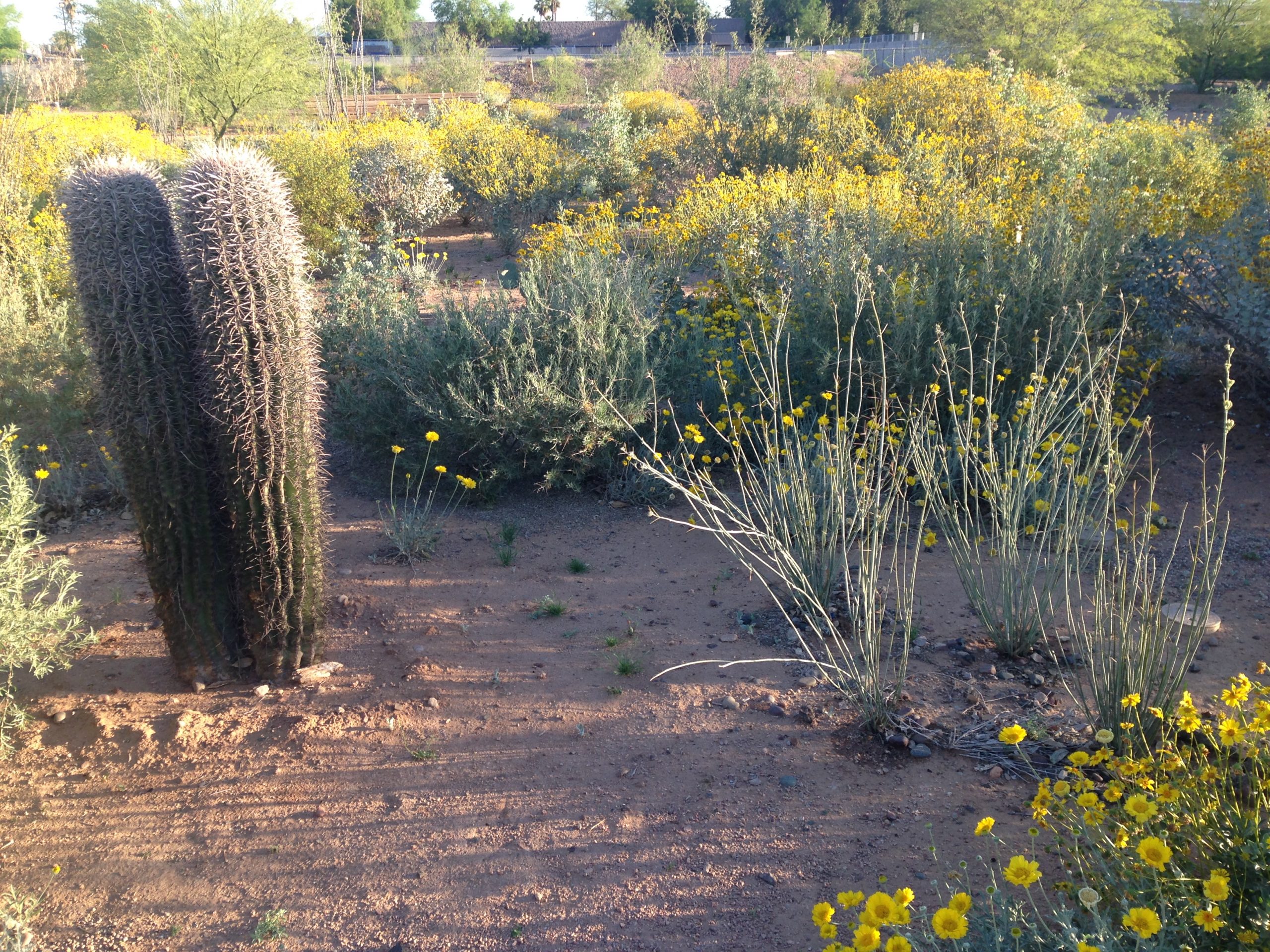
Awards and Accolades
The Garden of the B’s has been recognized or awarded several times in the last two years:
- The National Wildlife Federation certified the Garden as Wildlife Habitat #200,924.
- Monarch Watch certified the Garden as Monarch Waystation 9999 because of the nectar plants and 30 milkweeds that provide food and shelter as the butterflies migrate through Arizona. The first monarchs were spotted a year ago.
- Arizona’s Department of Environmental Quality presented Mesa High its Copper Level CERTIFICATE OF APPRECIATION for the Voluntary Environmental Stewardship Program Awards.
- Arizona Public Service and the Phoenix Suns named Mesa High School students as a “Green Team” on center court at half time of the Laker’s game in February 2017 as a result of their work in the Garden and the essays they wrote for the application process.
- And most recently, John Jung was selected by the North American Association for Environmental Education as the “2017 K-12 Educator of the Year” and was the subject of an ABC15 News feature story on November 8, 2017.
More Information or Schedule a Tour
For more information about Mesa High School’s Garden of the B’s, visit their website. Tours of the Garden are available by appointment only because Mesa High is a closed campus. Contact John Jung at jcjung@mpsaz.org.
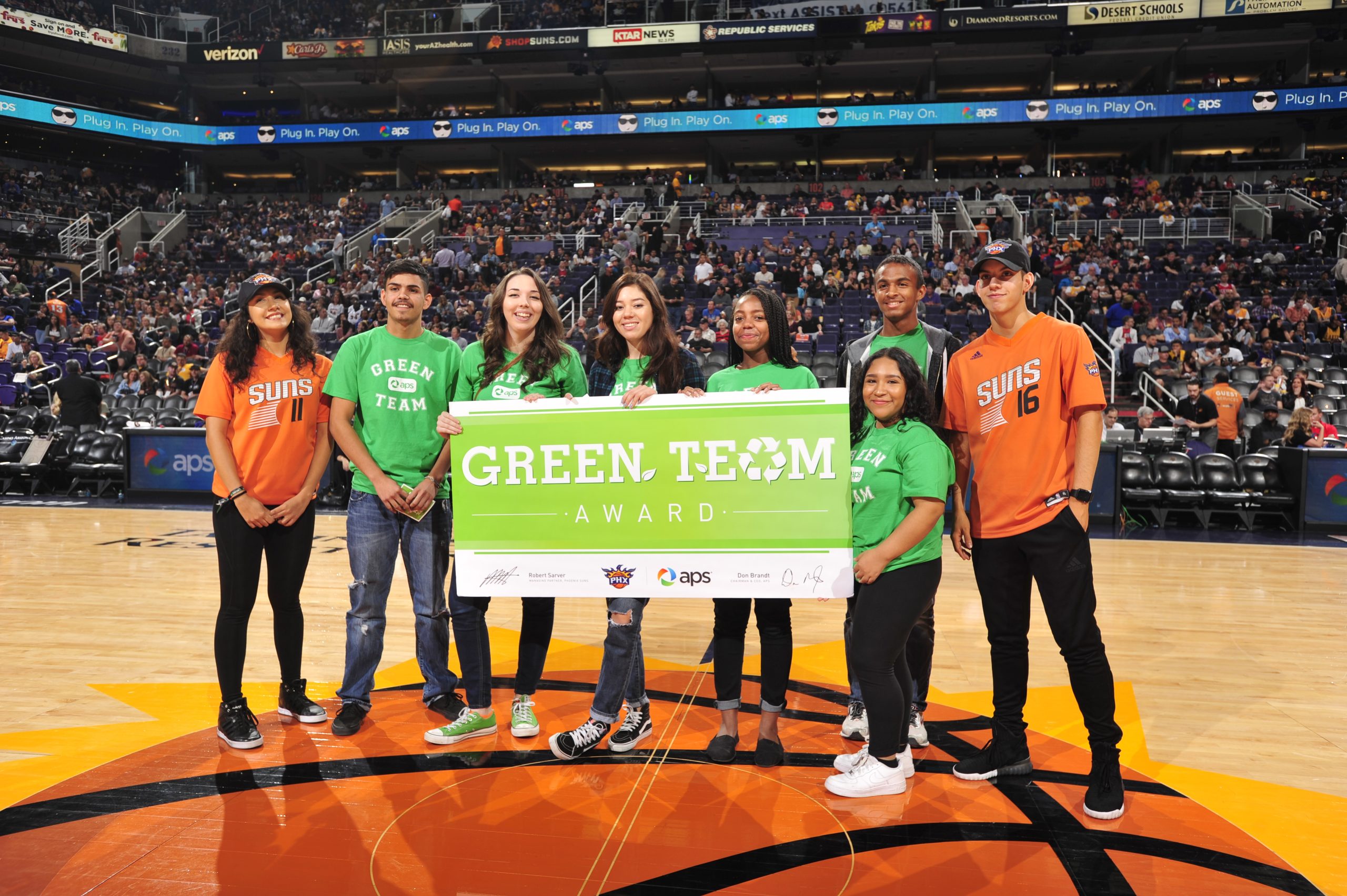
From time to time, Water – Use It Wisely features guest bloggers who write about topics related to water and water conservation. The author of this blog, John Jung, teaches environmental science at Mesa High School. Mr. Jung has several advanced degrees, including a Master’s of Natural Science from ASU. He is also the winner of several awards, including the 2017 North American Association for Environmental Education “K-12 Educator of the Year.”


